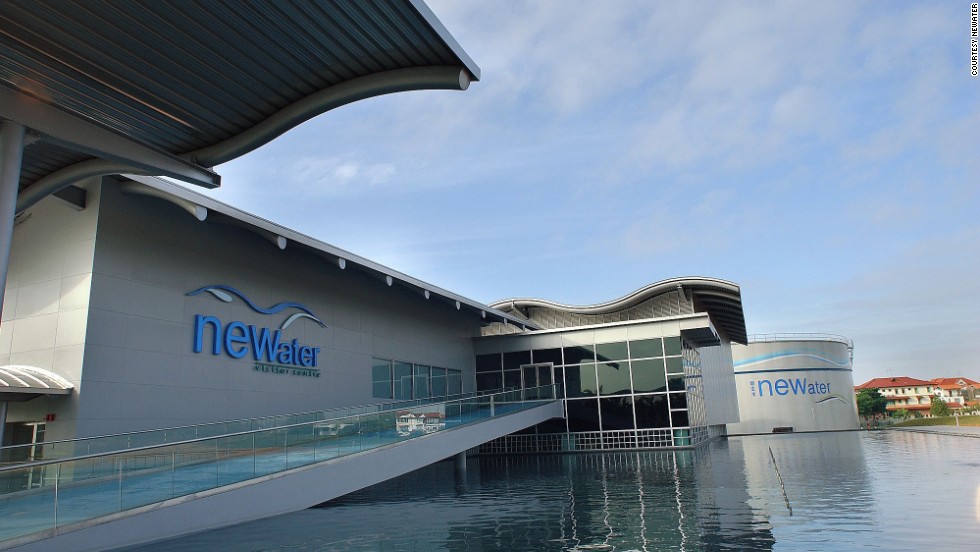Water reuse is increasingly seen as one solution to battle water scarcity. Can psychology help us get comfortable with drinking recycled wastewater?
by Attila Bodnar, Co-Founder and Executive Vice President of Business Development / Sales – China at Organica Water
Water scarcity has been increasingly directing the spotlight on water reuse. Droughts around the world force water authorities to realize that one of the least utilized water source is the treated wastewater and we no longer can consider it a waste but instead need to view it as a resource.
The industry is becoming aware that the obstacles to water reuse are not technical. We can produce pure H2O out of wastewater but in the public’s eye that doesn’t make it clean enough to be running from our taps. The majority would still consider it yucky, disgusting. After all, in our mind it is still wastewater (albeit allegedly clean)… and who wants to drink wastewater? The challenge is clearly a psychological one.
To contemplate the problem it is worth examining our own reaction to the idea. Take the recent publicity around the Bill Gates’s Omniprocessor, a high tech plant which burns sewage to make clean drinking water. In the Melinda and Bill Gates Foundation’s video, Gates drinks a glass of water and declares that just five minutes ago that water was human waste. This works well for a shock effect in which our natural repulsion is countered by Gates’ trust in the omnipotence of engineering: “Having studied the engineering behind it,” “I would happily drink it every day. It’s that safe.”
The problem however is that this kind of declaration doesn’t make that cringe in our stomach go away; no matter how credible the source. When you imagine drinking that water do feel as if you would have to first take a deep breath and suppress your revulsion? Research shows that most people would.

Labeling the challenge as psychological tends to be deemed as a synonymous to “imagined” or not based on “real facts” by many in the hard core engineering community. Chances are, some of you reading this blog belong to that group. The typical solution from this group is to expect the public to come around, allow reason to prevail and conquer that gut rejection.
Reality however is that the psychological factors are just as stubborn an obstacle as material engineering challenges. Therefore we need to find ways to address them instead of ignoring them. According to Paul Rozin, a professor of psychology at the University of Pennsylvania, who studied the question extensively, “it’s a problem that isn’t going to be solved by engineers. It will be solved by psychologists.”
I tend to think otherwise. Paul Rozin’s insight points to a key ingredient to the solution but not the solution itself. Psychologists won’t solve the problem. Instead, psychological considerations will become just as legitimate as engineering facts and reasoning in the design. We need to develop true integration of disciplines through combining civil engineering and psychology – admittedly a challenging task.
Famous water reuse projects have already resorted to psychological tools to deal with the “yuck” factor.
In Orange County, California, wastewater is treated to ultra-purity through a three-step treatment process (using microfiltration, reverse osmosis, and UV light) to meet drinking water standards; but instead of piping the clean water into the water supply, it is pumped into the ground. When the same water is pumped out of the ground, it is physically dirtier than when it was discharged from the plant, but is considered to have been “treated” for the “yuck factor”. While this is illogical from a purely engineering point of view, the prevalence of the “soft” psychological barriers make the additional cost acceptable.

Singapore’s NEWater program is famous for being a pioneer in water recycling. In that case the psychological barriers to reclaimed water are overcome by injecting the treated water into natural reservoirs, which is an important step in de-coupling the water’s origins from its intended use.

In both of these examples, a key element has been to “park” the water in natural setting – in the ground or a reservoir. Indeed, psychologists tell us that one the most effective tools in removing the disgusting element from wastewater is to change the identity of the water so it is not the same water. Carol Nemeroff, another research psychologist says, “It’s an identity issue, not a contents issue, so you have to break that perception. The water you’re drinking has to not be the same water, in your mind, as that raw sewage going in… and the best method to do that is to co-mingle the water with nature”. In the above examples the co-mingling is achieved by mixing treated wastewater with groundwater (as in Orange County) or with a lake (as in Singapore).
Bingo! Co-mingling the water with nature is exactly what we do at Organica. In addition to co-mingling however, we find that additional associative elements are crucial in creating this new identity if we are to achieve the same results in a dense urban setting…

